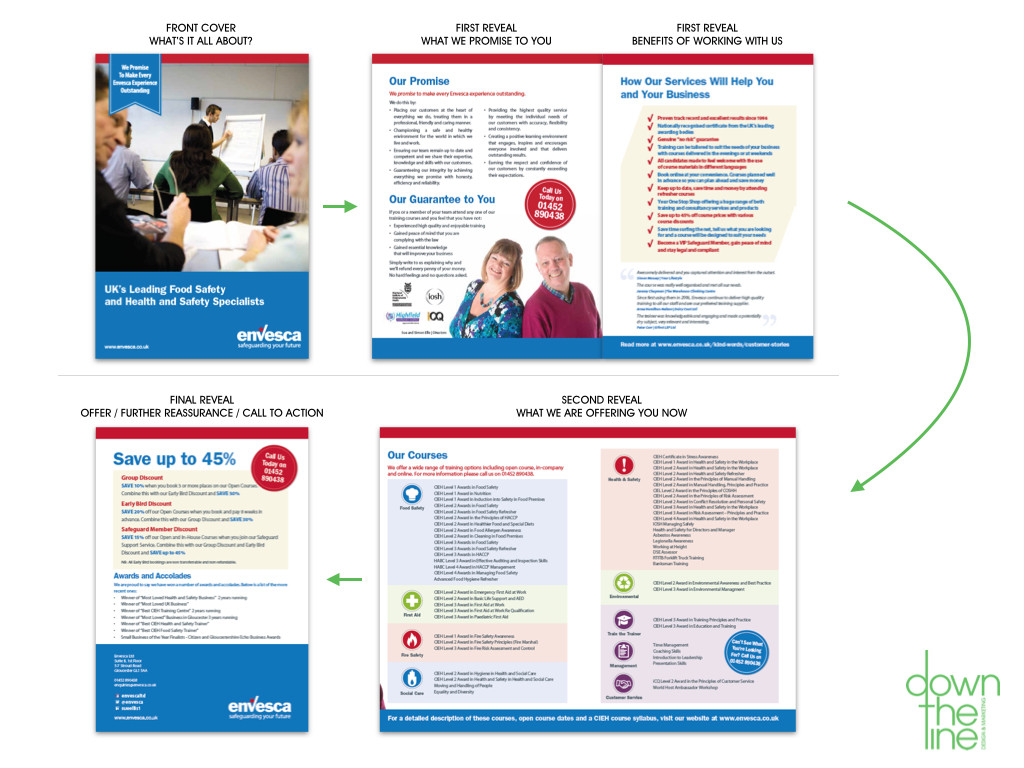Secrets to planning your next literature design piece
Every piece of literature design and print is different. From the market it’s to be used within, to the product or service it’s selling, to the brand / supplier that’s selling itself, to the format and length of the collateral.
That’s why it’s imperative to create a clear plan about the purpose, structure and overall narrative of your literature piece.
Here are a few pointers to what you ought to consider when planning and briefing your next piece of literature design…
What is it all about?
- If you can sum up the purpose of your literature piece in a dozen words, that’s ideal.
- The time and budget invested in producing a literature piece means it’s got to be focused on doing a job for you. By identifying what that is you can better gauge the design during its development and then the success of the literature piece when it’s been printed.
Who are you talking to?
- Be absolutely clear about who’s going to read your literature piece.
- By defining who it is you’ll be much better placed to 1. write / have your copy writer compose copy, 2. have your designer be able to design it appropriately, and 3. for you to sign things off more easily during the development process.
What are you trying to tell them?
- You can’t and must not try to tell your reader everything.
- Identify the key messages you need to communicate. Develop your narrative accordingly, focused on answering your reader’s questions before they ask them.
- By telling your reader what they’d want to hear, not what you want to tell them, you’ll be guaranteed to make your copy much more relevant.
List the benefits.
- Always remember, your reader wants to know how what you are offering is relevant to them.
- The easiest way is to communicate the benefits…’what is in it for them?’.
- Depending upon your business and marketplace, these might be practical benefits, or functional, or aspirational, or financial, or…whatever.
- You may want to speak to a few trusted, existing customers to find out what the perceived benefits are to them. They may be different to what you’d expect.
Where’s your proof?
- Your existing customers are some of your biggest weapons in providing proof that you do what you do.
- By showing you are a tried, tested and trusted pair of hands you’ll go a long way to reassuring your reader that they don’t need to worry about talking to you further.
Dangle the carrot…
- Unless your reader has bought from you before or what you are offering is something that has minimal risk and price, then you may want to consider providing your reader with an incentive to take action.
- Consider some form of offer or added value proposition that will encourage the reader to either do something now or keep you filed in the ‘must remember these guys and do whatever‘ compartment of their brain.
Invite the next conversation
- Remember that your literature piece is just one piece of your marketing jigsaw. Don’t let the trail go cold when your reader finishes reading.
- Make it as easy as possible for your reader to take action, to initiate a dialogue with you, and to find out more about your brand and what it is you offer.
By considering all the above, the pagination and design of your literature piece can take shape.
Below is an example of a 6 panel piece of literature design we delivered for Envesca, UK’s leading provider of health & safety and food safety training. The leaflet was specifically developed to raise awareness amongst existing customers of the range of courses they provide. All to help ensure the company is not pigeon-holed based upon the type of training the reader has traditionally used the company for.
Take a look at some of our other literature design work here, or get in touch if you’d like to chat about your next design project.

